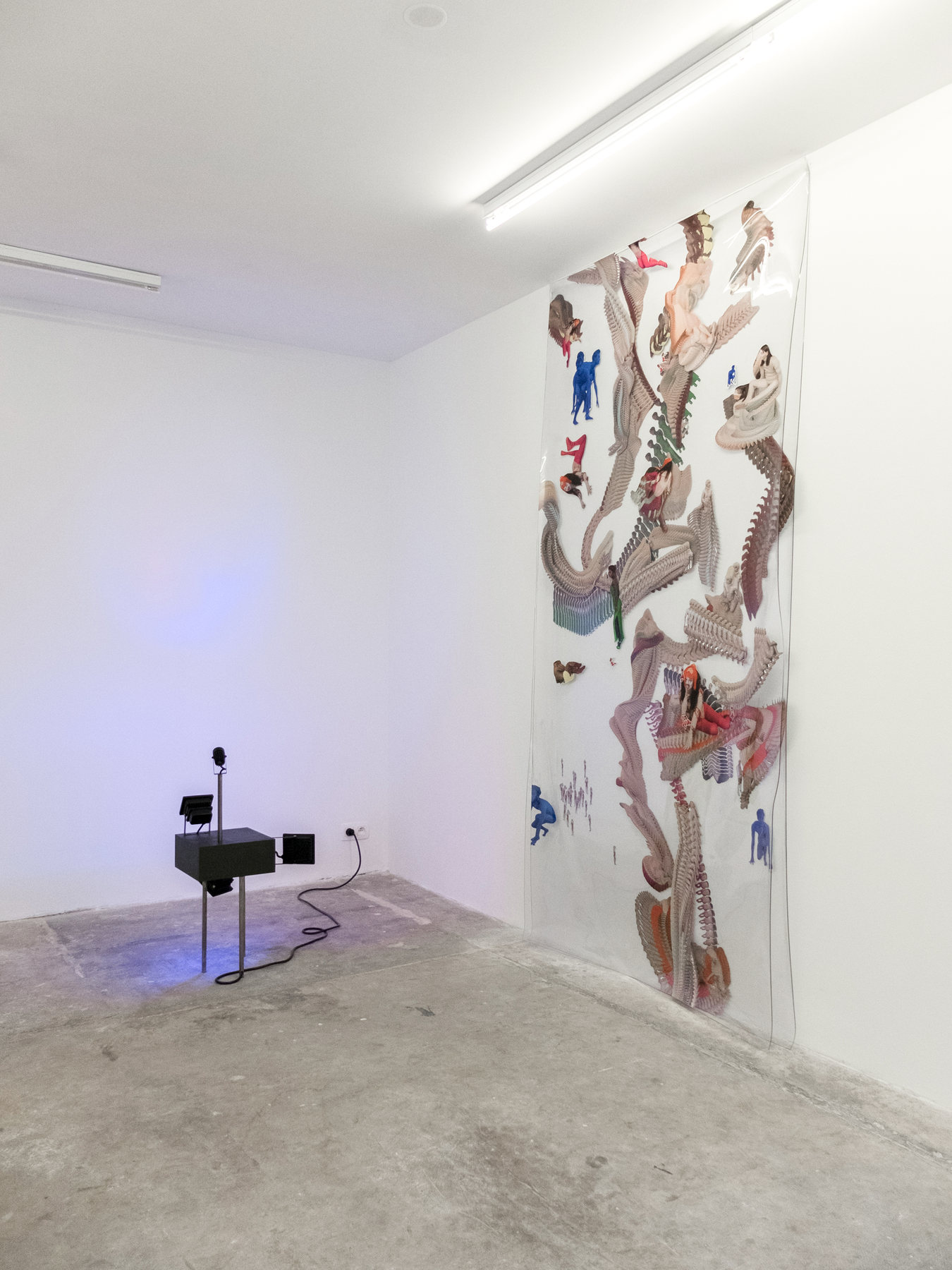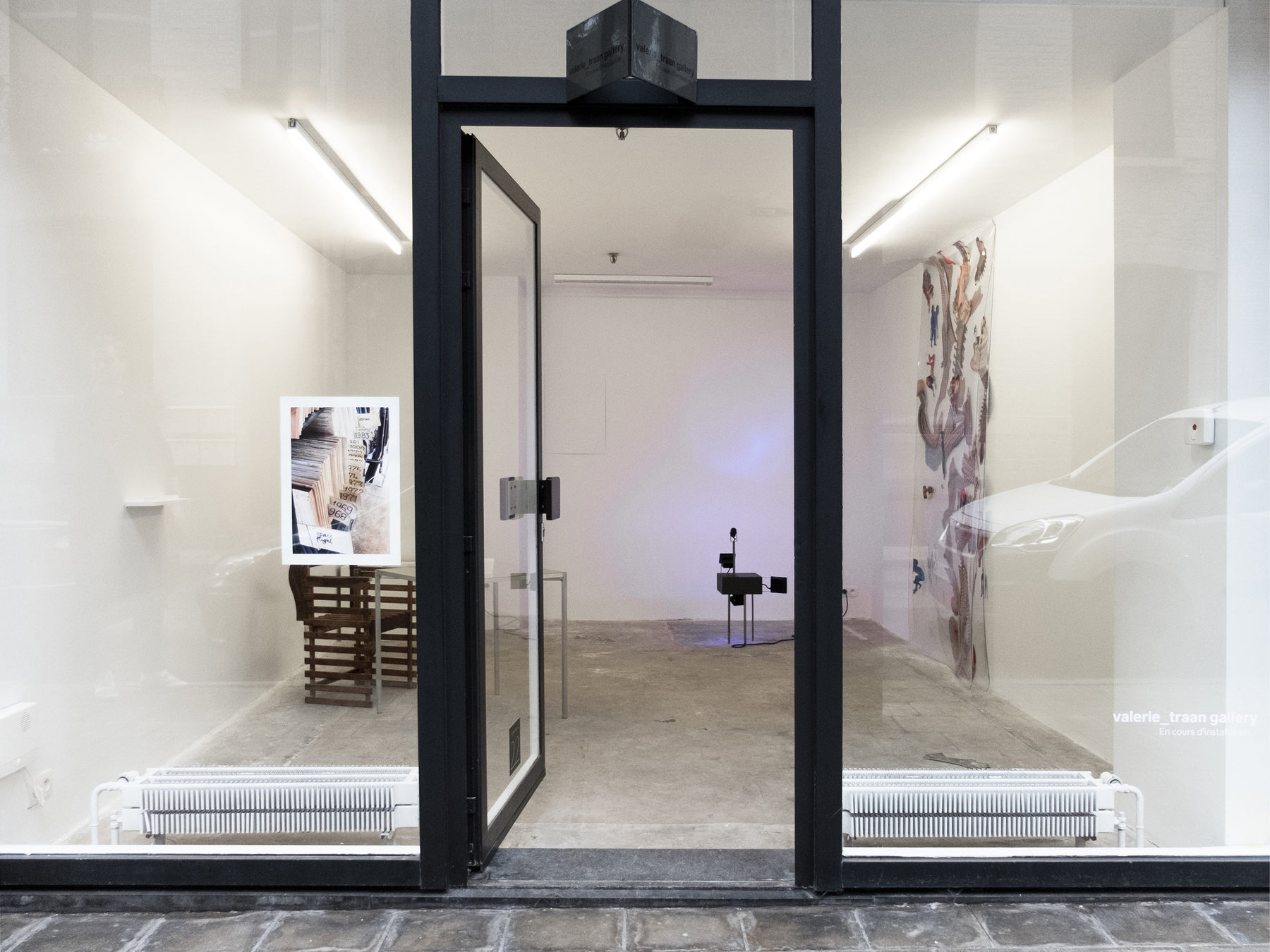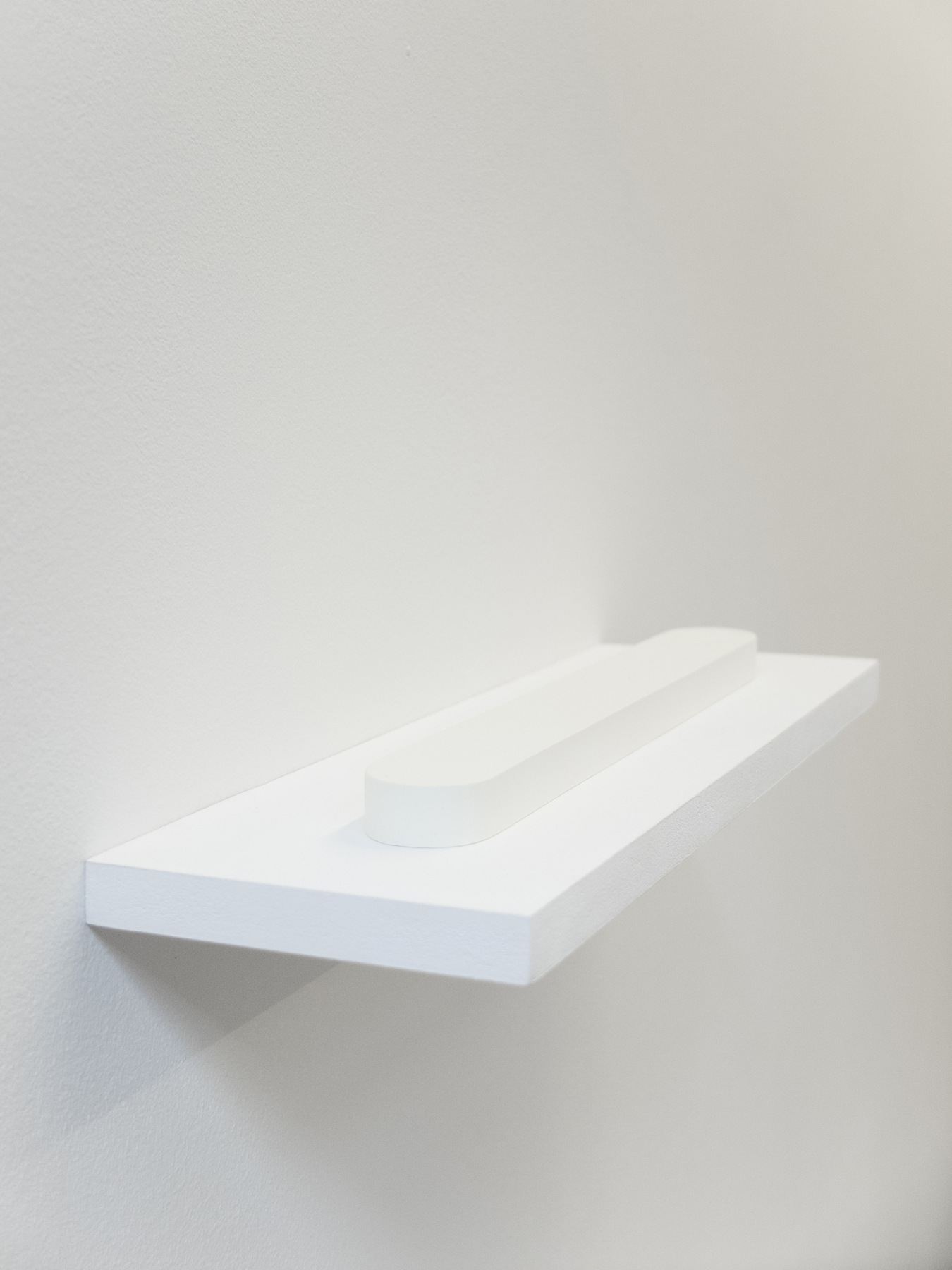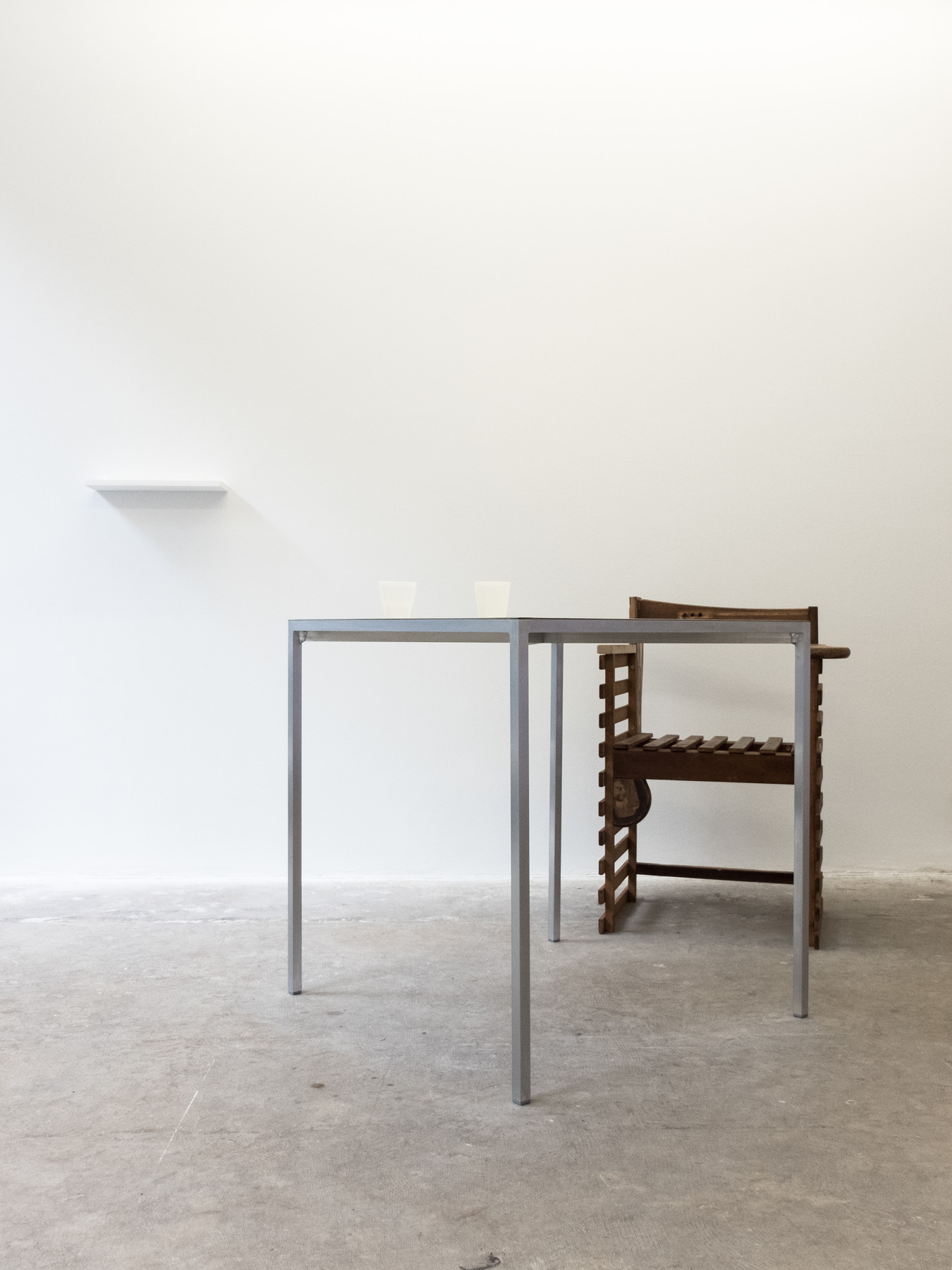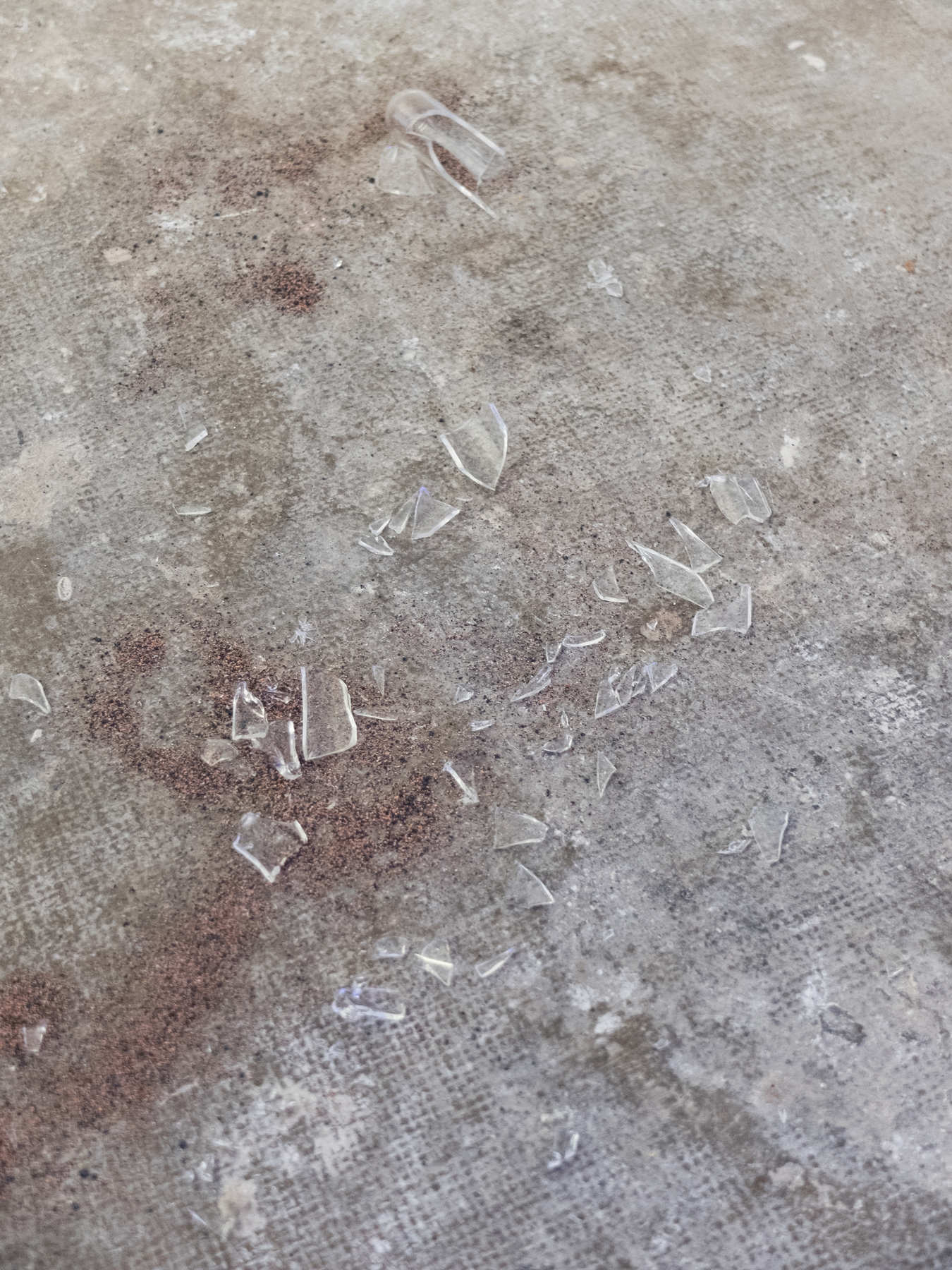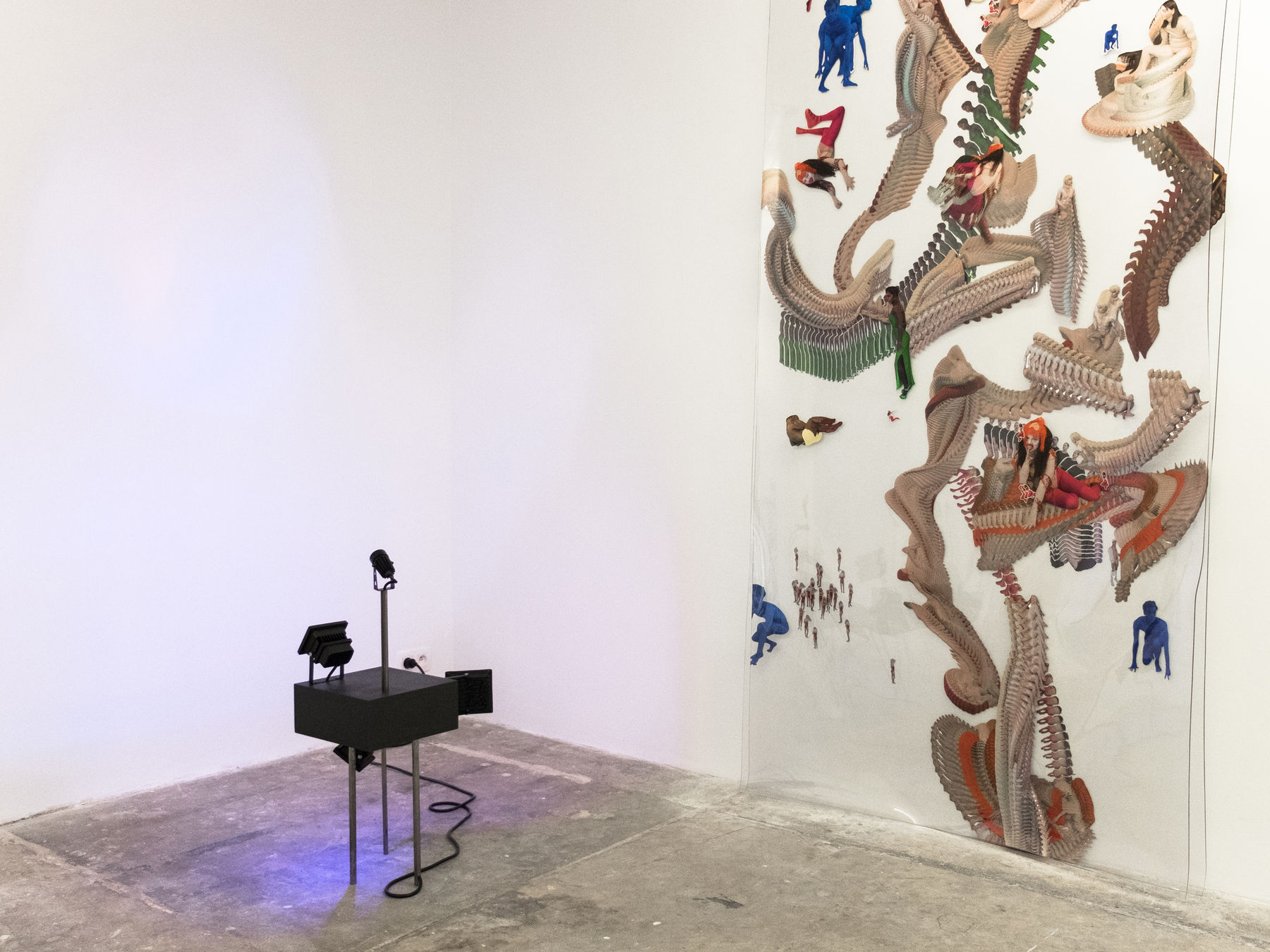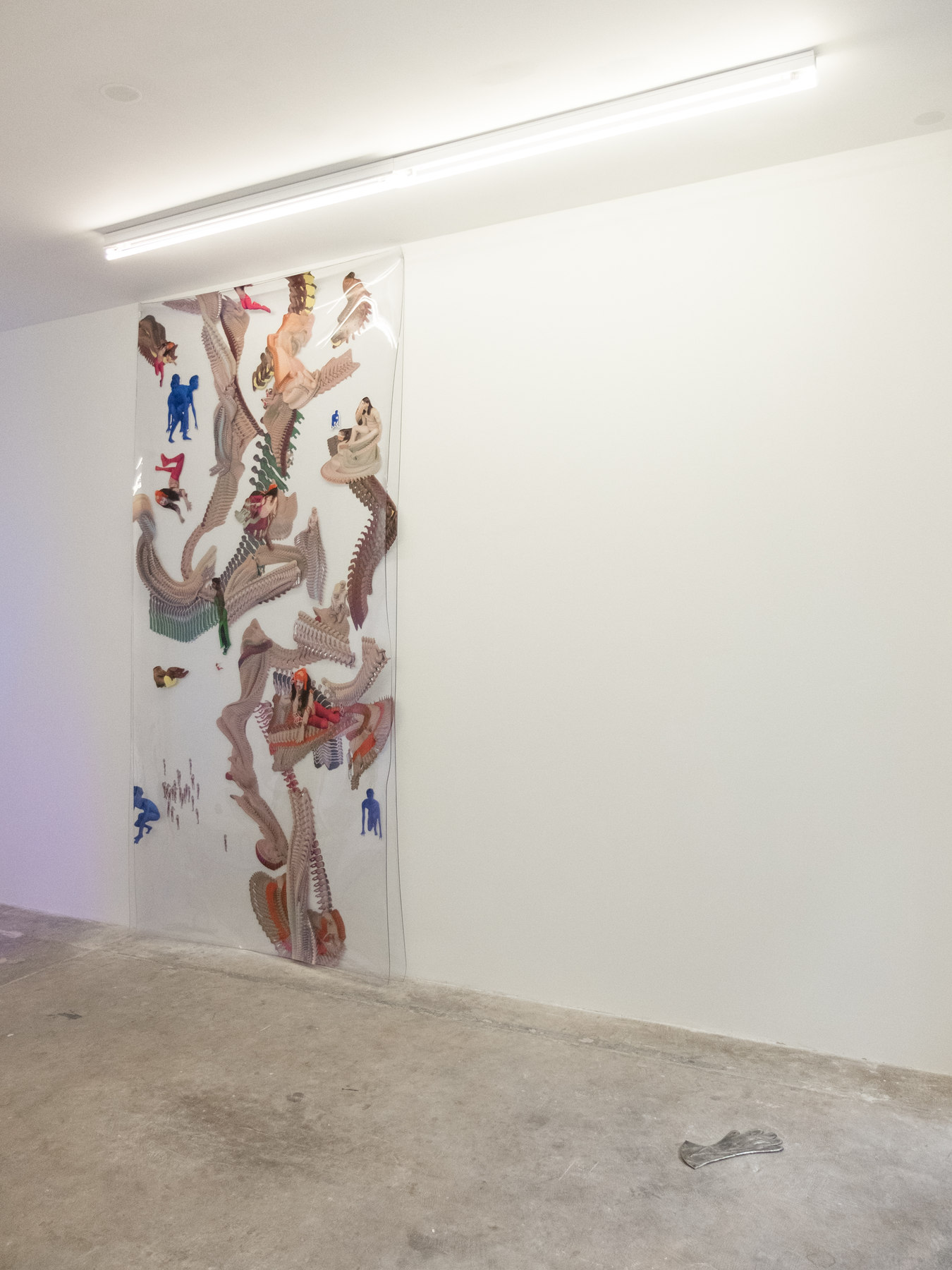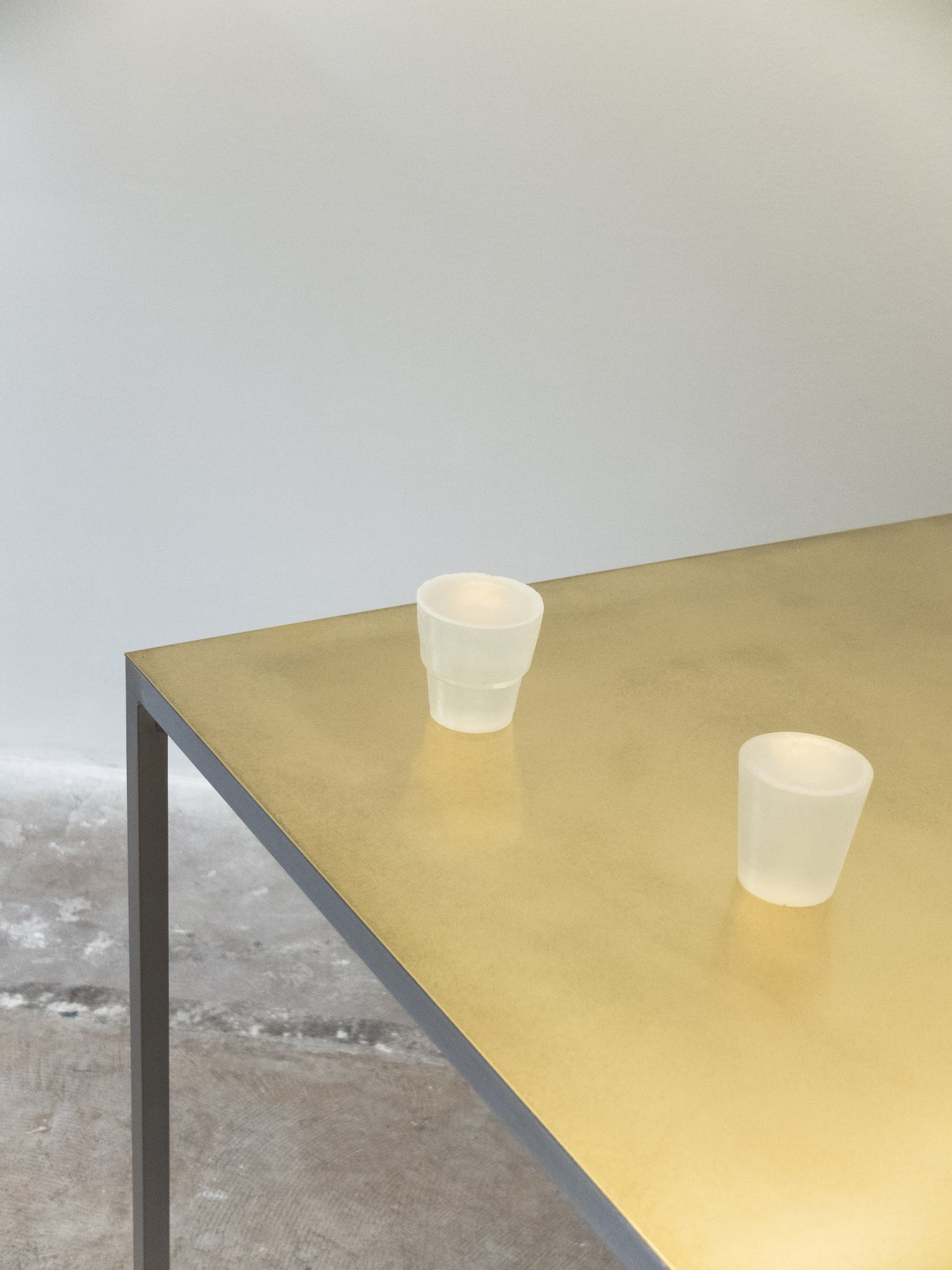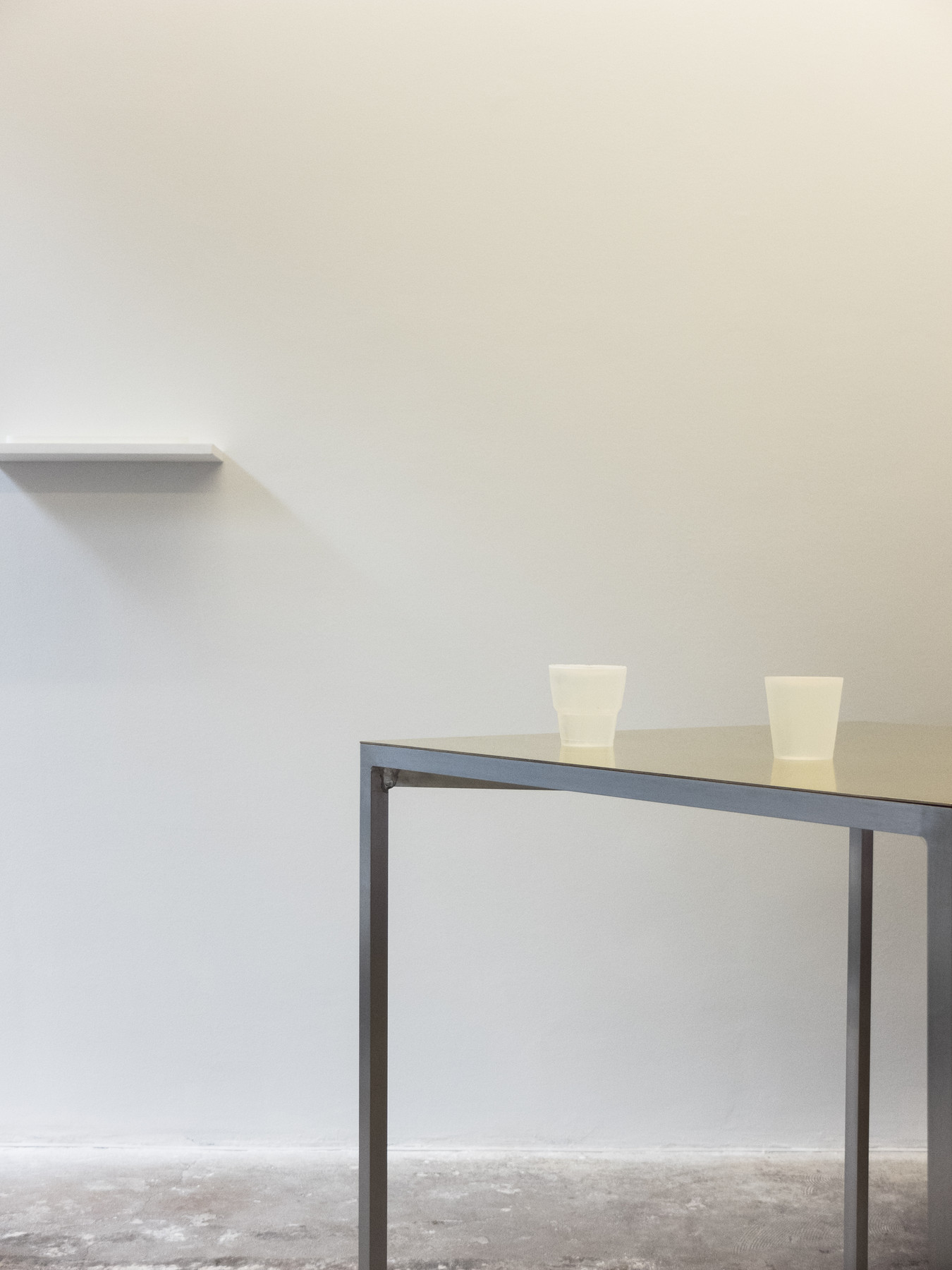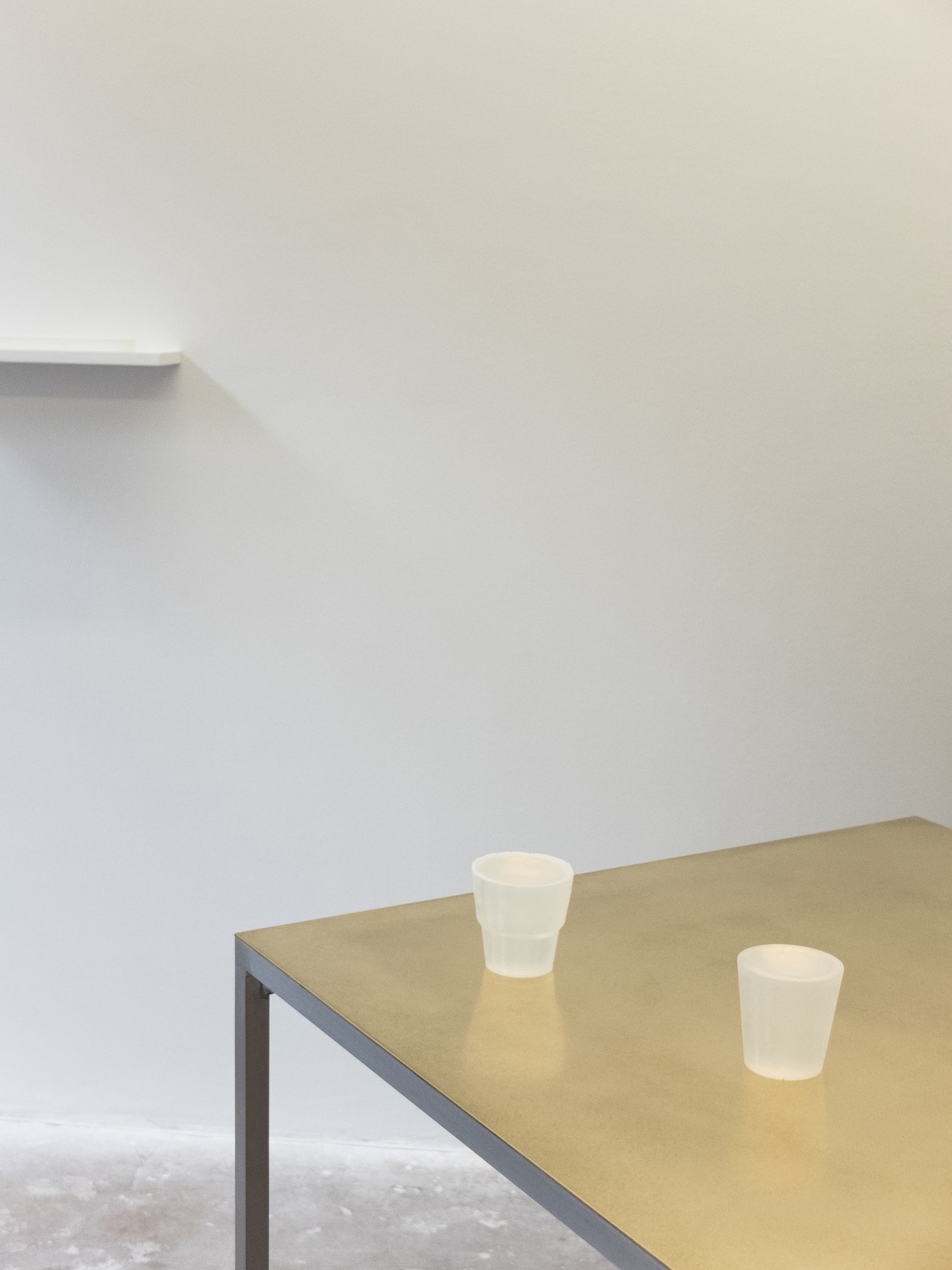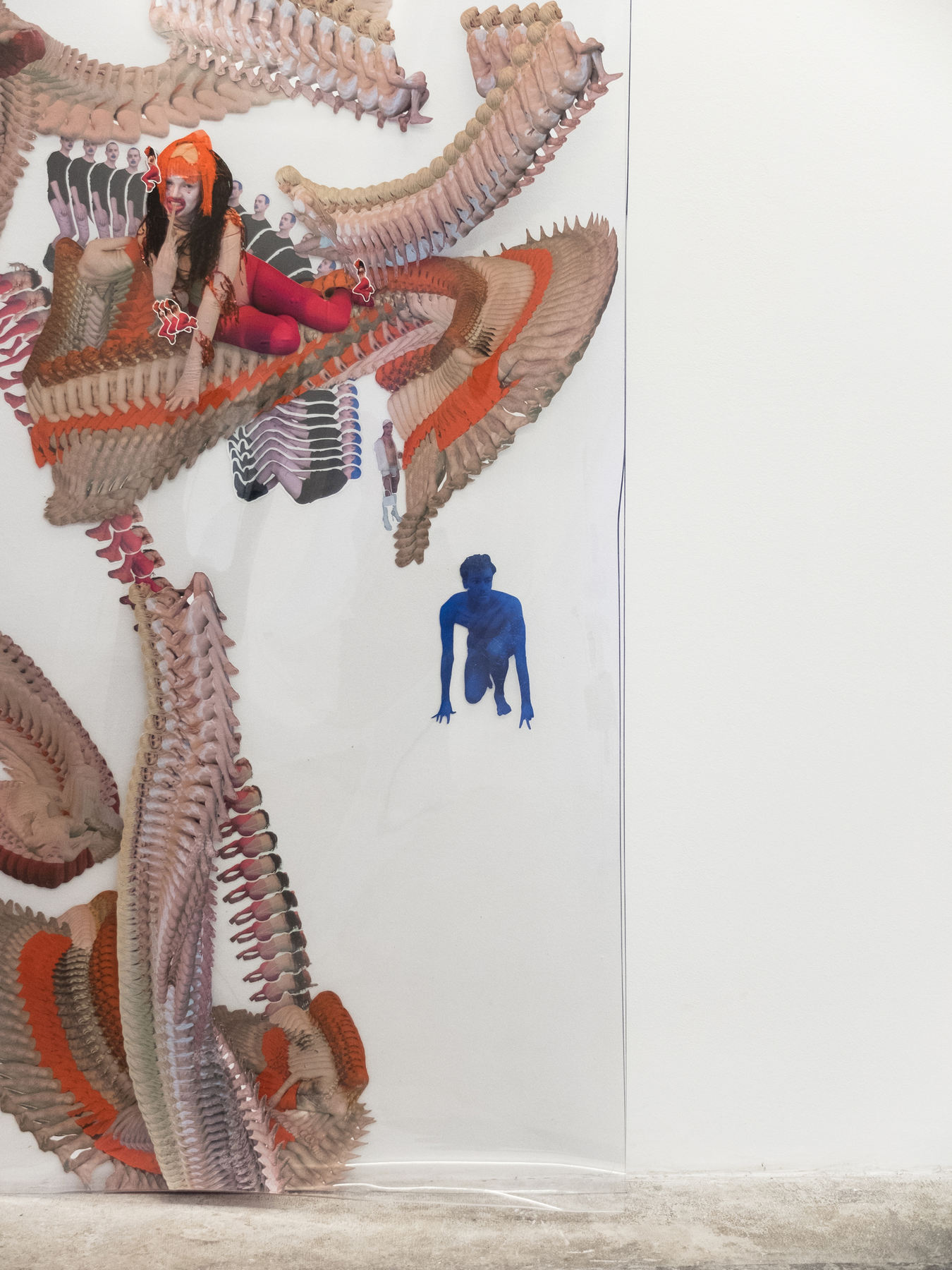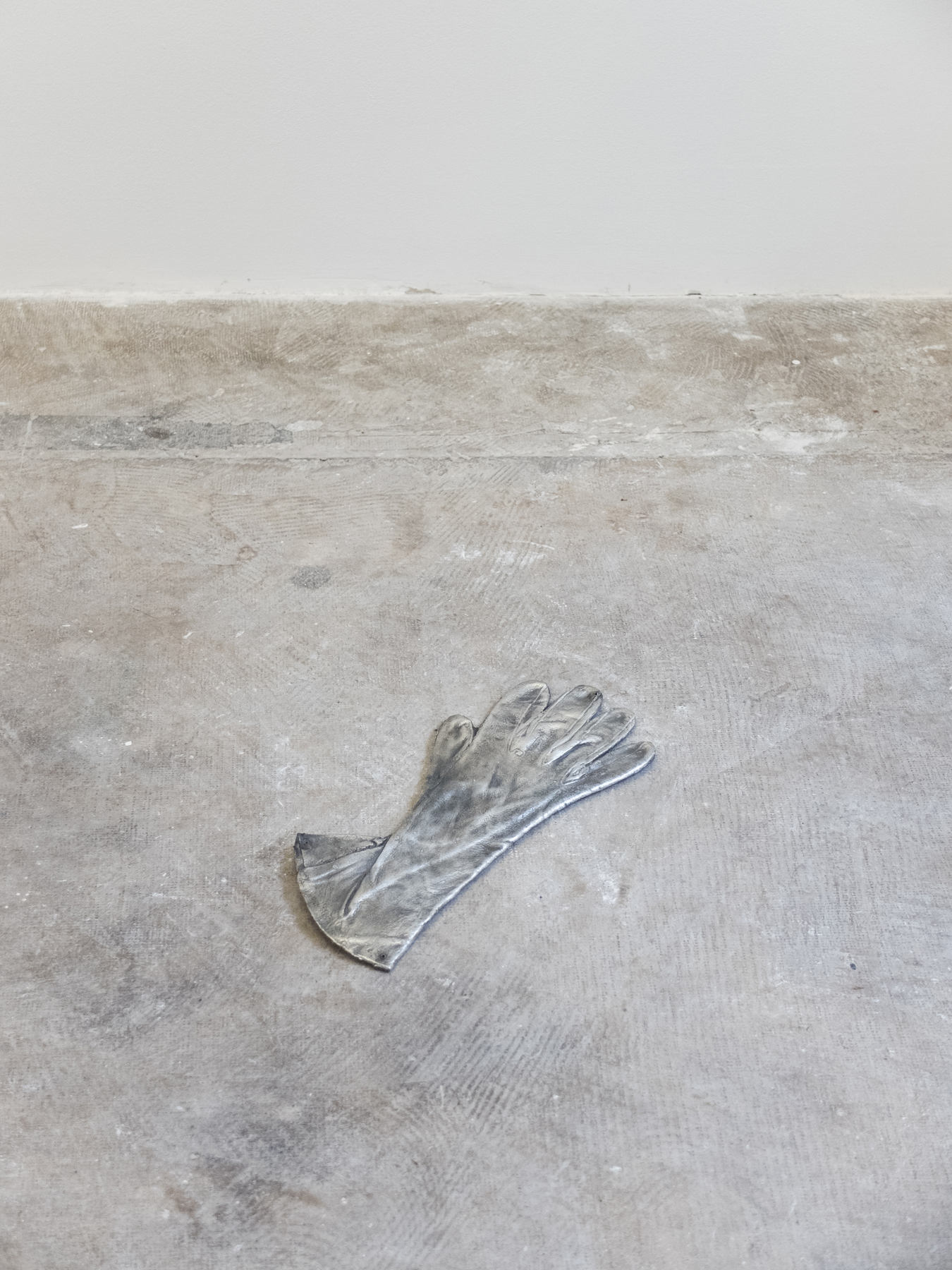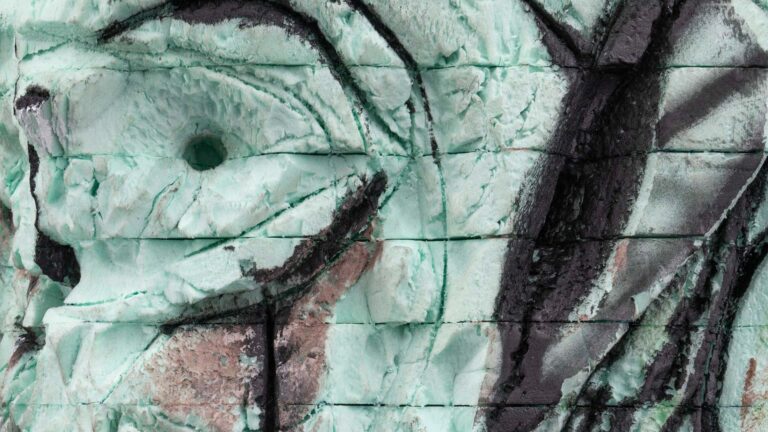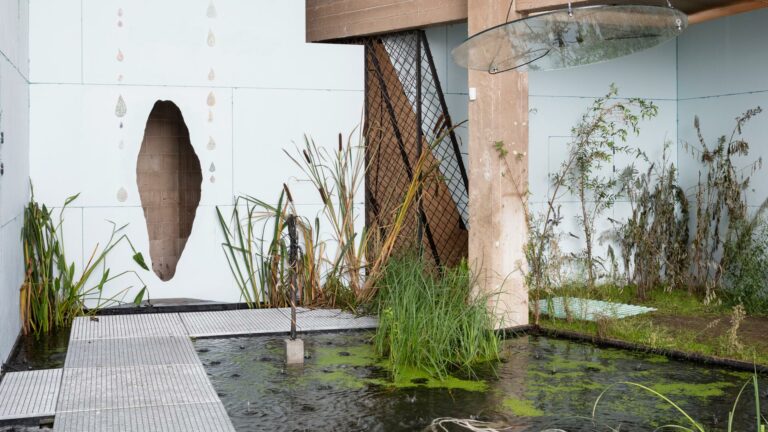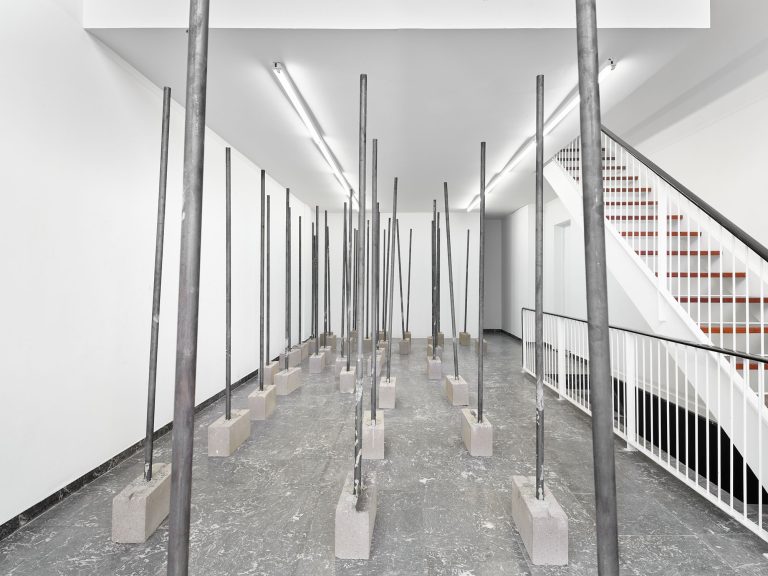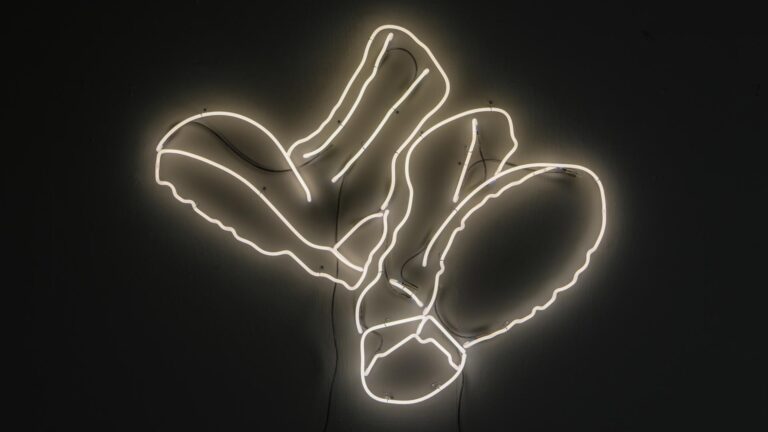Artists: Annemie Augustijns, Clarisse Bruynbroeck, Karen Amanda Moser, Liesbeth Doms, Muller Van Severen, Ralph Collier, Rikkert Paauw, Stef Van Looveren, Unfold & Barnabé Fillion
Exhibition title: En cours d’installation
Curated by: Clarisse Bruynbroeck and Ralph Collier
Venue: Rivoli Building, valerie_traan gallery, Brussels, Belgium
Date: September 21 – October 1, 2017
Photography: Ligia Poplawska, all images copyright and courtesy of the artists and valerie_traan gallery
En cours d’installation
En cours d’installation is a group exhibition initiated by valerie_traan gallery that investigates the boundaries of materiality/immateriality and its condition of appearance. The title of this exhibition refers to a marker of time that poses an unfinished process, where things don’t remain in a frozen state and evolve through different conditions.
En cours d’installation is not just a presentation of a group of objects. It is rather an act of creation where elements of light, colour and smell determine the atmosphere and also formally recognisable elements such as a table, a chair and a glass. The artists that are brought together in this exhibition certainly display a number of traits in common. These features don’t come in the form of a theme, technique or particular visual source but they connect through their similar intuition or approach towards defining the vitality of an image or an object.
valerie_traan is a space for objects and subjects often balancing on the dividing line between design, art and architecture. For this project, that takes place at the Rivoli building in Brussels, valerie_traan invites Clarisse Bruynbroeck and Ralph Collier to create an exhibition that represents the mindset of the gallery. Therefore, En cours d’installation is an encounter between artists who have a history with the gallery in dialogue with new voices.
En cours d’installation features Annemie Augustijns, Clarisse Bruynbroeck, Karen Amanda Moser, Liesbeth Doms, Muller Van Severen, Ralph Collier, Rikkert Paauw, Stef Van Looveren, Unfold & Barnabé Fillion.
—
Annemie Augustijns, Space flight Russia (2015), Laserprint
Exactly fifty years after the signing of the international Outer Space Treaty, Annemie Augustijns (°1965, BE) begins a dialogue with the cosmos. Augustijns does this not by way of watching it, but by looking right next to it and observing the way in which the meaning of the cosmos has been reconstructed in figures, objects and constellations on earth. The presentation of Augustijns’ work on the window of the gallery functions as a satellite of this exposition. Parallel with En cours d’installation, her solo exhibition I feel a breeze from other planets at valerie_traan gallery in Antwerp makes the cosmos palpable and allows us to take a look behind the scenes of astronomy and spacecraft.
Clarisse Bruynbroeck, Still (detail) (2017), Soap, Numbered pieces
Clarisse Bruynbroeck (°1989, BE) searches for the relationship between man and object. She investigates how an object can evolve or influence an action, and tries to make the invisible visible. No uniquely designed objects, but normal items that show traces of mass production. Bruynbroeck researches the everyday and tries to create a standstill. She shows us objects that we think we know. Why are these objects generally accepted? Are we still caring for the items we use daily? For En cours d’installation, Bruynbroeck uses transparent soap to recreate a typical plastic cup that is posed as a forgotten object, which nobody cares about.
Karen Amanda Moser, Expanding the day (2017), Plaster, phosphorescent pigment, Edition of 5 + 3 AP
Karen Amanda Moser (°1988, CH) often responds to specific situations, whether these are shaped by spatial, temporal, social or political parameters. In a conceptual tradition, she reflects upon how conventions of display eventually define our relationship towards a work of art. Through their interaction with a prescribed environment, her objects echo the precarity of their own existence. Displayed on a shelf, Expanding the Day marks a subtle presence in the exhibition. Because of the phosphorescent pigment, the object absorbs light during the day, in order to glow in the dark. As such, the work is only activated during nighttime, when the exhibition is closed. Moser questions the vitality of an object by making it impossible to experience the work as a whole.
Liesbeth Doms, Artist’s Aura – Modified to fit your living room (2017), Wood – metal tubes – remote controlled RGBW lights, Edition of 3 + 1 AP
Liesbeth Doms (°1989, BE) tackles preoccupations, such as persona, biography and artistic genealogy. Through her work, she comments on the urge to construct and foreground the biography of artists in relation to their work, which she deems pointless burdens. Doms playfully turns them into useful elements by which she constructs different means and situations and thus veils herself from any biographical definition.
Artist’s Aura is a collaboration between Doms and the professional aura reader Bart Vanwynsberghe, translating a reading of the artist’s aura into a display of coloured light. The light fills the space, yet it also remains empty, thus suggesting the inadequate anecdotal nature of biographies, questioning the desire and false necessity to make connections between the biography and content of an artist’s work.
Muller Van Severen, Table S brass (2016), Aluminum, brass, Numbered piece
Fien Muller (°1978, BE) and Hannes Van Severen (°1979, BE) have been on an inspired quest for sculpturally furniture objects since 2011— items that are spontaneously produced with apparent effortlessness. The universe that they create connects very naturally with their work as separate artists. Their fascination for certain materials and the properties they offer, their individual feeling for colour and the characteristic tension the taut and the playful, the static and mobility create continuity and identity for their work. For the exhibition their Table S Brass was selected as a functional table to work on, but foremost because of its materiality and its continuously evolving process.
Ralph Collier, Method Acting (2017), Leather glove, electroplated tin, Edition of 3 + 1 AP
Ralph Collier (°1990, BE) is more interested in transitions than in resolutions. For him there are no longer beautiful images, but rather chains of images. It is a dynamic structure that leads to the production of forms where a narrative unfolds. These forms inquire into a set of relations, from production to distribution to reception. With Method Acting Collier reflects upon the disjointed relationship between language and behavior as a means to question the nature of the real. The electroplated glove on the exhibition floor refers to a scene of Elia Kazan’s film On The Waterfront (1954). Here the object, by chance, challenges the actors to switch between his fictional and his own persona. In a way the glove bears no resemblance at all to the one in the film; it simply represents an image of an image.
Rikkert Paauw, Brussels (2017), Wood, Unique piece
For Dutch designer Rikkert Paauw (°1982, NL), the ground materials for building a design are simply found in the streets. One of his favourite occupations consists of creating a design on location, made out of thrown away materials he finds on the spot. By transforming the city’s waste into installations within that same city, Paauw keeps the circle of his circular design very short and builds a story that goes far beyond sustainability or reuse. On the occasion of En cours d’installation, Paauw made a chair out of materials he found on the streets of Brussels. This unique chair, that is made specially for this exhibition, interacts with Muller Van Severen’s Table S Brass.
Stef Van Looveren, Transpose (2017), Vinyl, stickers
Stef Van Looveren’s (°1992, BE) practice translates itself into video installation, photo and collage. These installations are used, as an attempt to reflect and dismantle the performativity of human behaviour, primarily within the notion of gender. Playfully mimicking our social conducts, along with visual culture, his work moves towards a surreal gesture. Taking an already existing video work as a starting point to recontextualise its movement and thereby rearranging the appearance. The vinyl carries the characters as a skin through which abstractions of identity take place. Stef Van Looveren suggests the inability to make something concrete and/or fixed. This work is still ongoing.
Unfold & Barnabé Fillion, Sea of Tranquility – olfactory (2015), granular mineral material, perfume, Edition of 50
What does the moon smell like? There are only twelve people who have had the precious opportunity to smell it. In collaboration with the French perfumer Barnabé Fillion, Unfold dived into the NASA archives to track the various references astronauts made on the smell and appearance of lunar dust. Based on these references, they formulated a scent with accents of silver, ozone, gunpowder, musty dust and honey. At En cours d’installation they present a fragment of their Sea of Tranquility – olfactory installation, a scent and olfactory experience that determines and reactivates on a spacial and historical level.

